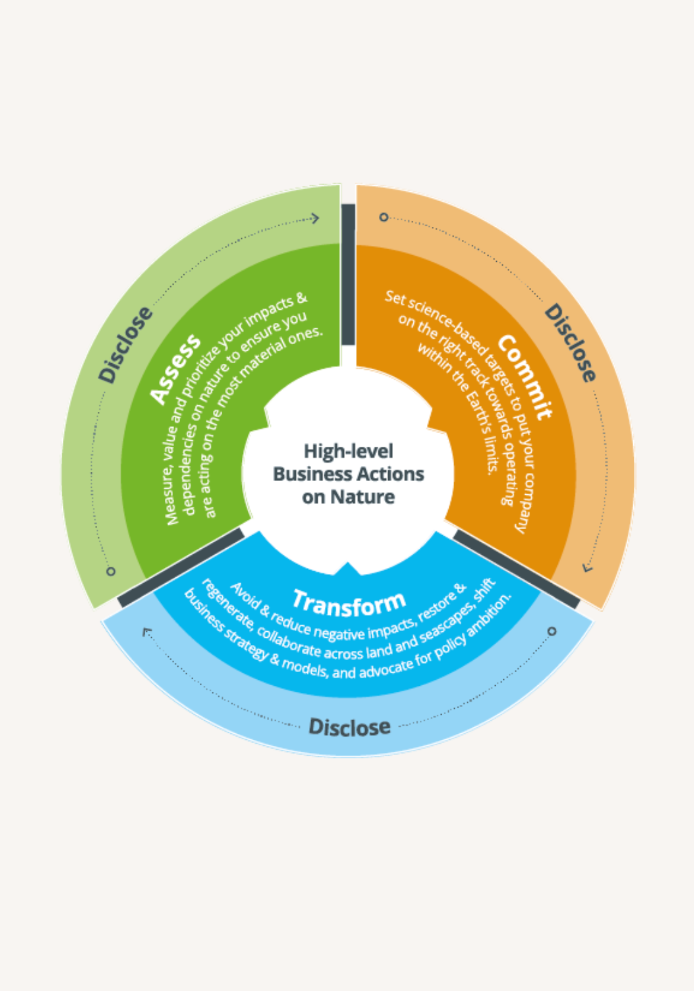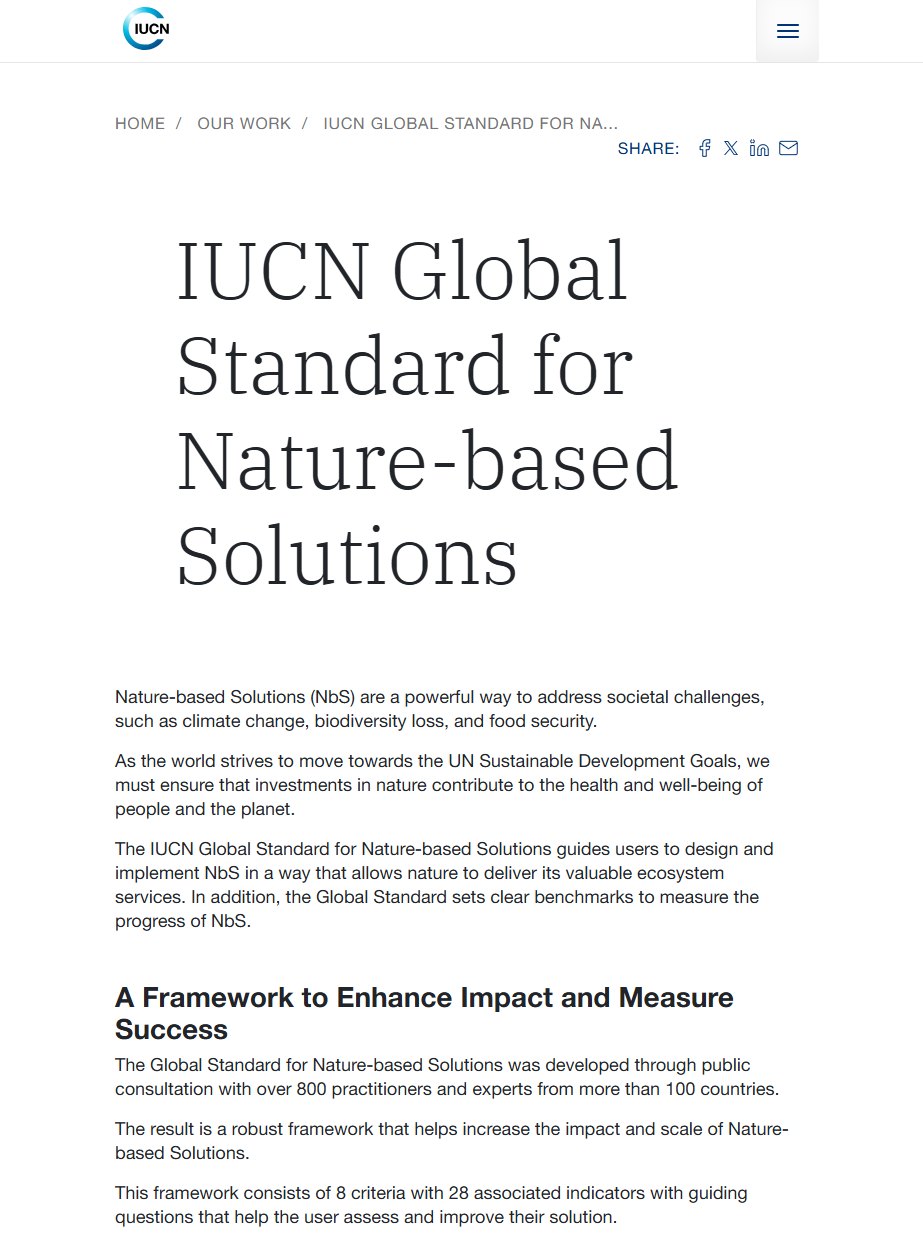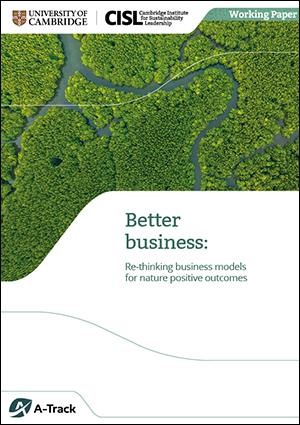Overview
Transform is where strategy becomes action. Previously in Commit, businesses developed a nature strategy and set science-based targets. Now, in Transform, businesses begin implementing those commitments and embedding nature into decision-making and operations.
Transform aligns with the Transform phase of the ACT-D: High-Level Business Actions on Nature(Opens in a new tab/window) framework and focuses on avoiding, minimising, restoring, and offsetting impacts on nature. It’s also about engaging across landscapes, industries, and value chains to drive systemic change. Transformation is essential for building a resilient business.
Business transformation
Transformation involves making significant and lasting changes to how a business interacts with nature. It goes beyond minor adjustments. It requires a shift in purpose, systems, decision-making, and operations to ensure nature is considered across all areas of the business.
Businesses need to conduct the following activities to transform:
- Embed nature integrity and regeneration as a core operating principle instead of an externality or compliance issue.
- Avoid, reduce, restore and regenerate, and transform its impact on nature. The Science Based Targets Network(Opens in a new tab/window)’s (SBTN) Action Framework, AR3T, provides a mitigation hierarchy that businesses can use.
- Build nature and resilience into everyday decisions.
- Collaborate and work with others, including within their business, industry and supply chain, to make change happen at a larger scale.
Transformation affects the following parts of a business:
- Strategy: Setting goals that support nature and long-term success.
- Operations: Changing how things are done to reduce harm and support nature (e.g. not just using less water but improving watersheds).
- Supply chains: Working with suppliers to make sure materials and products are nature-friendly.
- Finance: Using tools like green bonds or biodiversity credits/certificates to support nature-positive investments.
- Governance: Making sure leaders and decision-makers are responsible for nature-related risks and opportunities.
The following activities are examples of transformation:
- Using regenerative agriculture to improve soil health and support biodiversity.
- Creating nature-aligned financial products that help fund projects that protect or restore nature.
‘A financially viable business entity [is one] whose value proposition and rationale are centred around nature positive principles.’ – Cambridge Institute of Sustainability Leadership (Opens in a new tab/window)
Business transformation matters
Transformation is about more than meeting targets. It means tackling the root causes of nature loss, such as unsustainable practices and supply chain impacts, and aligning the business's operations with global nature goals and standards.
Taking this high-level action helps businesses:
- build long-term resilience and stay competitive
- drive innovation by working with nature, not against it
- earn trust from stakeholders, regulators and investors.
Transformation shows businesses are serious about protecting nature and creating a better future for the environment and the economy.
Actions in practice
Nature-related transformation means proactively contributing to the restoration and regeneration of nature and ensuring businesses operate sustainably. Transforming activities include:
Core business activities
- Implement nature-considered sustainable procurement policies and procedures.
- Include nature considerations into governance structures and risk management, for example create a nature and sustainability governance committee on its board.
- Look for financing and loan structures that reward positive nature targets.
Sector specific activities
- Avoid deforestation, land degradation, overextraction and prioritise land use.
- Promote agroforestry and regenerative agriculture.
- Redesign product and service delivery to promote circularity, efficiency and waste reduction.
- Consider nature-based solutions to meet operational and climate goals.
Learn more in the Resource Centre

ACT-D: High Level Business Actions on Nature

IUCN Global Standard for Nature-based Solutions

Better business: Re-thinking business models for nature positive outcomes
Real-world examples of business transformation
Access case studies from our network participants to learn more about how they are transforming their operations.

Investing in a nature positive future

Setting the benchmark in environmental stewardship and sustainability reporting
Takeaways
Activate a nature strategy
- Transformation is putting a nature strategy into action.
- Use the mitigation hierarchy to avoid, minimise, restore and/or offset the business's impacts on nature.
Integrate nature into decision-making
- Embed nature and resilience into decision making.
Collaborate for systemic impact
- Engage within a business's industry and across its value chain to deliver systemic change. Collaboration is essential.
Next
Explore the Knowledge Hub
Access tools, resources and insights that support business to take nature-related action

Case Studies

Insights


